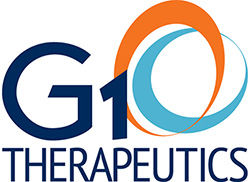预约演示
更新于:2025-12-27

Simcere Zaiming Pharmaceutical Co., Ltd.
更新于:2025-12-27
概览
标签
肿瘤
呼吸系统疾病
皮肤和肌肉骨骼疾病
小分子化药
化学药
ADC
疾病领域得分
一眼洞穿机构专注的疾病领域
暂无数据
技术平台
公司药物应用最多的技术
暂无数据
靶点
公司最常开发的靶点
暂无数据
| 排名前五的药物类型 | 数量 |
|---|---|
| 小分子化药 | 11 |
| 化学药 | 7 |
| ADC | 6 |
| 单克隆抗体 | 3 |
| 重组蛋白 | 2 |
关联
37
项与 先声再明医药股份有限公司 相关的药物靶点 |
作用机制 VEGF-A抑制剂 |
在研机构 |
原研机构 |
在研适应症 |
最高研发阶段批准上市 |
首次获批国家/地区 中国 |
首次获批日期2025-06-30 |
作用机制 CDK4抑制剂 [+1] |
最高研发阶段批准上市 |
首次获批国家/地区 美国 |
首次获批日期2021-02-12 |
靶点 |
作用机制 VEGFR拮抗剂 |
在研机构 |
原研机构 |
最高研发阶段批准上市 |
首次获批国家/地区 中国 |
首次获批日期2005-09-12 |
18
项与 先声再明医药股份有限公司 相关的临床试验NCT06792552
A Phase I First-in-human, Open-label, Multicenter Study to Investigate the Safety, Tolerability, Pharmacokinetics and Preliminary Antitumor Activity of SIM0505 in Adult Participants With Advanced Solid Tumors
This is an open-label, multicenter phase 1 study to evaluate the safety, Tolerability, Pharmacokinetics and Preliminary Antitumor Activity of SIM0505 in Adult Participants with Advanced Solid Tumors
开始日期2025-02-26 |
申办/合作机构  NextCure, Inc. NextCure, Inc. [+1] |
NCT06686745
A Phase I, First-in-Human, Multicenter Study to Investigate the Safety, Tolerability, Pharmacokinetics and Preliminary Antitumor Activity of SIM0508 Monotherapy and Combination Therapy in Adult Participants With Locally Advanced/Metastatic Solid Tumors
This is a multicenter, open-label, first-in-human study to evaluate the safety,efficacy, and PK/PD characteristics of SIM0508 as a single agent and in combination with olaparib in participants with locally advanced/metastatic solid tumors.
开始日期2024-12-06 |
申办/合作机构  江苏先声药业有限公司 江苏先声药业有限公司 [+1] |
NCT06680921
A Randomized, Open-label, Phase III Study of SIM0270 Combined With Everolimus Versus Treatment of Physician's Choice in Patients With CDK4/6 Inhibitors Previously Treated , ER+/HER2- Locally Advanced or Metastatic Breast Cancer
This Phase III, randomized, open label, multicenter study will evaluate the efficacy and safety of SIM0270 combined with everolimus compared to physician's choice of treatment in subjects with ER+/HER2- locally advanced or metastatic breast cancer who have had previous treatment with CDK4/6 inhibitor.
开始日期2024-11-14 |
申办/合作机构  江苏先声药业有限公司 江苏先声药业有限公司 [+1] |
100 项与 先声再明医药股份有限公司 相关的临床结果
登录后查看更多信息
0 项与 先声再明医药股份有限公司 相关的专利(医药)
登录后查看更多信息
18
项与 先声再明医药股份有限公司 相关的文献(医药)2025-12-31·mAbs
3C conjugates: a highly sensitive platform for antibody internalization assessment in ADC development
Article
作者: Wu, Yadan ; Liao, Jingli ; Fu, Yayuan ; Jiao, Xi ; Zhang, Yutian ; Luan, Shuhui ; Chen, Changyan ; Wang, Shuai
Antibody-drug conjugates (ADCs) rely on antibody-mediated internalization to deliver cytotoxic payloads into tumor cells. Therefore, quantitative assessment of antibody internalization is essential for ADC development, particularly during early antibody screening stages. However, conventional internalization assays, whether direct or indirect, often face challenges such as low throughput, reduced sensitivity, and limited target specificity due to spatial hindrance. Here, we introduce a versatile 3C peptide conjugate platform that utilizes the high-affinity binding of IgG by the C1-C3 domains of streptococcal protein G. This platform includes 3C-toxin for cytotoxicity-based internalization detection and 3C-pHAb for pH-sensitive fluorescent tracking. By simply incubating these reagents with antibodies, effective labeling is achieved without complex modifications, enabling sensitive and high-throughput evaluation of internalization. We validated the platform across multiple tumor-associated targets, including HER2, CDH6, LIV-1, LYPD3, and GPC3, demonstrating a strong correlation between 3C-based assays and the cytotoxic efficacy of corresponding ADCs. Notably, 3C-toxin showed superior target promiscuity compared to traditional DT3C methods, expanding applicability to a broader range of antigens. This platform provides a scalable solution for antibody internalization analysis, positioned to accelerate ADC discovery by providing reliable early-stage screening metrics.
2025-11-05·ANTIMICROBIAL AGENTS AND CHEMOTHERAPY
Model-informed drug development in public health emergency of international concern: accelerating marketing authorization of simnotrelvir
Article
作者: Fu, Shu-Meng ; Hu, Hong-Lin ; Xu, Shan-Sen ; Zhao, Wei ; Zhu, Shun-Wei ; Yang, Yang ; Zhang, Xin-Fang ; Tang, Bo-Hao ; Chen, Jia ; Ye, Pan-Pan ; Liu, Lian ; Zhang, Wei ; Yao, Bu-Fan ; Yang, Xin-Mei ; Song, Lin-Lin ; Hao, Guo-Xiang ; Guo, Zi-Jia ; Zheng, Yi
ABSTRACT:
During a Public Health Emergency of International Concern (PHEIC), rapid drug development is critical, but traditional clinical trials are time-consuming and high-risk. This study used coronavirus disease 2019 (COVID-19) as an example to highlight the pivotal role of model-informed drug development (MIDD) in expediting the marketing authorization of simnotrelvir in China, a 3CL
pro
inhibitor for COVID-19 treatment. Three simnotrelvir clinical trials (Phase Ia, Ib, II/III) were optimized using the MIDD approach. Pharmacokinetics was investigated using nonlinear mixed-effects models, exposure was calculated through Monte Carlo simulation and Bayes estimation, and exposure-efficacy/safety relationships were analyzed using linear/logistic regression models. The MIDD approach began with a translational study to predict patients’ starting doses using first-in-human data, preclinical data, and pharmacodynamic surrogate marker. A dose level of 750 mg/100 mg simnotrelvir/ritonavir was recommended, using simulation results with 90.6% of participants’ trough concentration exceeding EC
90
for anti-Omicron variant. Then, a biomarker confirmation study to investigate dose-exposure-response relationship found that 750 mg suppressed viral load more than 300 mg (−4.995 vs. −4.236 log
10
copies/mL,
P
= 0.0367) in Phase Ib. Finally, a randomized controlled trial to confirm benefit-risk ratio found that simnotrelvir/ritonavir reduced time to sustained resolution of 11 clinical syndromes by 1.5 days compared with placebo, had no serious adverse events, and had a flat exposure-response relationship with viral load reduction, time to sustained resolution, and ≥2 grade treatment-emergent adverse event rate with approved dosage. MIDD enhanced clinical trial success, optimized the benefit-risk profile, and expedited marketing authorization for new drug development in response to PHEIC.
CLINICAL TRIALS:
This study is registered with ClinicalTrials.gov as
NCT05339646
,
NCT05369676
, and
NCT05506176
.
2025-10-01·Translational Lung Cancer Research
A retrospective cross-sectional study of FGFR2b alterations in Chinese patients with advanced squamous non-small cell lung cancer: prevalence, programmed death-ligand 1 co-expression patterns, and association with clinical outcomes
Article
作者: Lin, Dongmei ; Ao, Chunxia ; Wang, Xiyuan ; Yang, Chen ; Sun, Wei ; Tang, Renhong ; Fu, Yayuan ; Li, Jiongyan ; Ge, Yuanjie ; Sun, Shuguang ; Chi, Kaiwen ; Wang, Haiyue
Background:
Current standard of care for squamous non-small cell lung cancer (sqNSCLC) is not very effective, and FGFR2b-targeted therapy may be a new option for patients with sqNSCLC. The prevalence and clinical implications of fibroblast growth factor receptor 2b (FGFR2b) expression in Chinese patients with advanced sqNSCLC remain poorly characterized. This study evaluated FGFR2b expression patterns, their association with programmed death-ligand 1 (PD-L1) expression, and clinical outcomes in this population.
Methods:
This retrospective cross-sectional analysis screened three hundred newly diagnosed advanced sqNSCLC patients from 2018 to 2024. Archival biopsy samples were assessed for FGFR2b expression via immunohistochemistry (IHC). A total of 266 patients, with histologically confirmed stage IIIB-IV sqNSCLC and valid FGFR2b protein expression status, were enrolled. Historical clinical data and PD-L1 detection reports were extracted from hospital records.
Results:
Among the 266 patients, 117 (44.0%, 117/266) were diagnosed with IIIB/IIIC-stage cancer, and 149 (56%, 149/266) were diagnosed with IV-stage cancer. FGFR2b positivity (≥1+ in ≥1% tumor cells) was observed in 50.8% of patients, while overexpression (≥2+ in ≥1% tumor cells) occurred in 19.5%. FGFR2b expression was correlated significantly with sex (P=0.04), and cancer stage (P=0.01). Among 204 patients with valid FGFR2b and PD-L1 dual expression data, over 80% of FGFR2b-positive tumors demonstrated concurrent PD-L1 expression. In patients receiving first-line paclitaxel/nab-paclitaxel-platinum combined with anti-programmed cell death-1 (PD-1)/PD-L1 antibodies, FGFR2b-positive cohorts exhibited superior outcomes: higher objective response rate (57.4% vs. 41.9%) and prolonged median progression-free survival {11.3 months [95% confidence interval (CI): 6.6-17.9] vs. 6.5 months (95% CI: 5.0-17.3)} compared to FGFR2b-negative counterparts.
Conclusions:
FGFR2b expression may serve as a predictive biomarker for therapeutic response of FGFR2b-targeted agents in sqNSCLC. The high co-expression rate of FGFR2b and PD-L1 supports the feasibility of combining FGFR2b-targeted agents with immune checkpoint inhibitors as a rational treatment strategy.
831
项与 先声再明医药股份有限公司 相关的新闻(医药)2025-12-27
2025 年生物制药行业的整体交易不算景气,但“双特异性/多特异性抗体”(简单说就是能同时绑定两个及以上分子靶点的抗体药物)却成了最大亮点 —— 不仅占据了年度前 20 大重磅交易的四分之一,前三大授权合作和第二大并购案都和它相关,而且很多交易都盯上了中国企业的相关资产。
表1 2025年多特异性抗体交易前十名
一、行业交易:数量减了,金额却涨了
过去 12 个月里,生物制药的总交易数跌到了 2016 年以来的最低水平:2025 年前 10 个月全行业才公布 215 笔交易,远低于 2024 年的 317 笔和 2023 年的 298 笔。但肿瘤、神经疾病、感染病、自身免疫病、内分泌 / 代谢这五大热门领域,总交易额仍有 123 亿美元,和前三年差不多。
尤其是肿瘤领域,虽然交易数量大幅下滑(2025 年前 10 月仅 105 笔,2024 年同期 175 笔),但单笔授权交易的平均金额涨了 30%,从 3660 万美元涨到 4760 万美元;并购交易也一样,数量从 2024 年全年 36 笔降到 2025 年前 10 月 26 笔,但单笔平均金额从 4.75 亿美元飙升到 11 亿美元。罗氏、阿斯利康、艾伯维这些大厂都在肿瘤领域砸重金:罗氏 15 亿美元收购 CAR-T 疗法公司 Poseida,艾伯维 22 亿美元和 Xilio 合作双特异性 T 细胞衔接器,阿斯利康 10 亿美元拿下体内 CAR-T 先驱 EsoBiotec。
图1 生物制药活动。按治疗领域划分的生物制药研发(R&D)交易数量。
二、双特异性抗体:从 “配角” 变 “主角”
双特异性抗体之所以火爆,核心是三个原因:
商业需求倒逼:很多老牌单靶点抗体药的专利快到期了,企业用双特异性抗体绑定两个已知靶点,能轻松延伸产品线;
临床效果靠谱:试验证明,同时针对疾病机制里的两个靶点,治疗效果更好(比如强生 2022 年用两种抗体组合治疗溃疡性结肠炎,效果显著);
标杆药物获批:安进的 Imdelltra(治疗小细胞肺癌的 T 细胞衔接器)获批,让大家看到了这类药物在实体瘤中的潜力,掀起了研发热潮。
2025 年前 10 月,前 20 大研发授权交易里有 6 笔是双特异性抗体相关的:武田花 114 亿美元买了信达的两款药(一款双特异性抗体、一款 ADC 药物,针对胃癌和胰腺癌);百时美施贵宝 111 亿美元和 BioNTech 合作,开发针对多种实体瘤的双特异性抗体;辉瑞 63 亿美元从三生国健拿下治疗肺癌、肠癌的 PD-1×VEGF 双特异性抗体。
艾伯维是最活跃的玩家,仅 2025 年就和先声再明、Xilio、IGI Therapeutics 达成三笔交易,总投入约 51 亿美元,重点布局 T 细胞衔接器(能帮 T 细胞精准杀癌细胞的药物)。此外,Genmab 还花 80 亿美元收购了 Merus,一口气拿下多款双特异性抗体资产,包括已获批治疗肺癌的 HER2×HER3 双抗。
图2|按治疗领域划分的前五大并购交易价值。数据以亿美元显示,从2024年到2025年至今。
三、中国企业:成了 “香饽饽”
跨国药企都在抢中国的双特异性抗体资产 ——2024 年 7 月到 2025 年 7 月,它们给中国生物科技公司的前期合作款就超 40 亿美元。10 笔相关重磅交易中,给中国企业的前期付款合计超 26 亿美元,其中 6 笔是 T 细胞衔接器相关。
中国企业的优势很明显:抗体工程技术强,能快速、低成本地通过小规模人体试验验证药物效果。这些交易的靶点既有 BCMA、VEGF、EGFR 这类传统肿瘤靶点,也有 TSLP、IL-33 这类自身免疫病相关靶点,说明中国药企不再只盯着肿瘤,开始往自身免疫病领域拓展。四、其他热门赛道
除了双特异性抗体,还有两个方向也很火:
分子胶水降解剂:前 20 大授权交易里有 4 笔涉及这类药物,主要针对乳腺癌、肺癌等疾病的新靶点;
体内 CAR-T 疗法:阿斯利康、吉利德、百时美施贵宝等大厂纷纷收购相关公司,总投入超 48 亿美元,不用像传统 CAR-T 那样 “抽血改造细胞再回输”,直接打针就能起效,更方便。五、未来看点
双特异性抗体已经从 “小众补充” 变成了 “核心疗法”,未来重点看两个方向:一是双特异性 ADC(抗体偶联药物,相当于 “精准导弹 + 炸药包”),二是新靶点(比如卵巢癌的 CLDN6、肾癌的 ENPP3)。
2026 年能不能继续火,关键看新一代双特异性抗体的临床数据,能不能比现有的单靶点抗体更有效。跨国药企因为专利到期,还会继续买中国的资产;中国企业则靠 “快速验证药物效果” 的优势赚钱。如果这些都能实现,2025 年就不是双特异性抗体的 “昙花一现”,而是它成为主流疗法的开始。
参考来源:doi: https://doi.org/10.1038/d43747-025-00111-4
识别微信二维码,添加生物制品圈小编,符合条件者即可加入
生物制品微信群!
请注明:姓名+研究方向!
版
权
声
明
本公众号所有转载文章系出于传递更多信息之目的,且明确注明来源和作者,不希望被转载的媒体或个人可与我们联系(cbplib@163.com),我们将立即进行删除处理。所有文章仅代表作者观不本站。
细胞疗法免疫疗法并购抗体药物偶联物专利到期
2025-12-27
今年创新药企业频繁宣布BD交易,但从三季度以来,原本利好的消息却不被二级市场买账。最近一周,BD交易再掀一个小高潮。12月22日,先声药业(02096.HK)宣布其附属公司江苏再明与Ipsen于12月19日签订独家授权许可协议。同日,荃信生物(02509.HK)发布公告,12月19日,其与Windward Bio Group AG附属公司LE2025 Therapeutics AG就公司自主研发的QX027N达成授权合作。12月21日,加科思(01167.HK)宣布,已就其自主研发的泛KRAS抑制剂JAB-23E73与阿斯利康达成合作协议。12月15日-12月17日,长春高新(000661.SZ)、翰森制药(03692.HK)、和铂医药(02142.HK)也相继发布与海外企业BD交易消息。消息发布后,12月22日,加科思股价下跌13.58%,先声药业股价下滑1.98%,荃信生物股价则上涨1.44%。12月17日消息发布后,铂医药股价下跌1.15%,翰森制药股价下跌0.51%。12月16日,长春高新股价则随着消息的发布上涨3.77%。中国创新药行业在2025年迎来BD交易大爆发,密集的BD交易从5月起开始延续至今。据丁香园Insight数据库,今年国内共达成100多起license out交易,总金额超过1100亿美元。截至2025年12月21日,单笔首付款超过1亿美金的有15起,总金额超过10亿美金的交易有37起,仅次于美国。BD出海交易是创新药企发展的重要事件,而二级市场的反应却不尽相同。时代周报记者统计了今年以来A股和港股医药上市企业的37笔BD出海交易,有21笔交易消息公布后首个交易日企业股价出现上涨,也有15笔交易后企业股价出现下跌。5月-7月,三生国健(688336.SH)、迈威生物(688062.SH)、恒瑞医药(600276.SH;01276.HK)在公布消息后的首个交易日均出现涨停。而荣昌生物(688331.SH;09995.HK)则在公告当日股价大跌。医药行业资深经理人杜臣在接受时代周报记者采访时指出,创新药从创意到研发设计乃至于商业化成功,需要漫长的时间和巨额投入,本质上属于“复杂交易”,需要理性对待,不论对资本市场还是产品市场都是如此。时代周报记者根据公开信息整理BD发布后遭遇股价下跌2025年创新药BD出海浪潮从5月末开始持续至年底,从资本市场的反应来看,不同时间阶段热度不同,总体而言,市场情绪呈现从火热到趋于平淡和理性。在今年5月前,创新药资本市场较为沉寂,对BD出海交易反应也较为平淡,据时代周报记者不完全统计,1月2日-5月15日的8笔BD出海交易中,6家企业在消息公布后股价下跌,有2家企业股价微涨。直到5月20日,三生制药(01530.HK)与辉瑞的交易发布,此次交易中12.5亿美元不可退还且不可抵扣的首付款打破国产创新药出海首付款纪录。伴随交易公布,涉及交易的三生制药子公司三生国健股价5月19日-5月22日连续4日涨停。此后多家药企BD出海交易密集发布,历经多年资本寒冬后,创新药市场迅速火热,创新药板块也一路高歌。东方财富数据显示,A股创新药板块从今年5月至8月呈整体上涨趋势,从5月9日收盘的1110.41点,一度涨至8月22日最高的1726.52点。时代周报记者不完全统计,5月20日-9月24日的16笔BD出海交易中,13家企业在消息公布后股价上涨,3家企业出现股价下滑。10月,第二波创新药BD出海浪潮掀起,多项重磅交易密集落地。10月22日,信达生物(01801.HK)与武田制药达成总交易额高达114亿美元的合作,创下国产创新药BD交易总额的新纪录。此外,翰森制药、奥赛康(002755.SZ)、诺诚健华(688428.SH;09969.HK)、甘李药业(603087.SH)等企业也在10月陆续宣布BD交易。但不同于5-8月相关企业股价连续涨停和创新药板块一路高歌,10月公布的BD交易未明显提振药企股价,在官宣当日股价出现下滑或仅有小幅上涨。尤其是信达生物与武田制药的交易,虽创下国产创新药BD交易总额新纪录,但官宣当日股价却下跌1.96%。瑞银证券中国医疗行业研究主管陈晨曾向时代周报记者表示,10月以来上述变化的原因,首先在于BD预期已经体现在此前的股价中,其次,部分交易虽然金额较多,但合作伙伴可能并非预期中的大型MNC;再者,创新药行业整体估值已经处于高位。12月22日,加科思在公布交易后股价下滑超10%。加科思方面在媒体交流会中指出,二级市场较为复杂,今年创新药市场热度复苏后,基本以北上资金为主,相对更关注短期操作。“短期市场热度降低也未尝不是好事,调整有利于创新药行业夯实基础。当前国内创新药企市值较跨国药企仍存在显著差距,长期具备增长空间,但这一过程应伴随临床进展逐步兑现,渐进式上涨更为健康。”陈晨分析称。与此同时,二级市场的反应也与BD交易本身的特点相关。杜臣向时代周报记者指出,其中涉及具体项目独特性和差异化情况、标的交易总额和首付款情况、接盘方商业化能力等方面。荣昌生物的BD交易就是典型案例。美国东部时间6月25日,荣昌生物宣布,将公司泰它西普有偿许可给美国纳斯达克上市公司Vor Bio,荣昌生物方面将取得Vor Bio价值1.25亿美元现金及认股权证、最高可达41.05亿美元的里程碑付款等。交易公布后的6月26日,荣昌生物A股收跌18.36%,港股收跌11.71%。该交易不被市场看好的原因或有两方面。首先是交易首付款较低,仅0.45亿美元,而5-6月期间中国创新药有多个大额BD交易公布。另外,Vor Bio是一家交易前市值只有5000万美金的纳斯达克上市公司,且近年来经营情况不佳,2024年年底,Vor Bio曾收到纳斯达克的不合规通知。今年5月8日,Vor Bio宣布暂停所有临床和生产活动,裁员约95%,仅保留8名员工以维持基本运营并寻求战略替代方案。“借船出海”仍有必要随着10月以来创新药市场热度有所降低并趋于理性,BD交易对于生物医药企业股价的刺激作用也有所减弱,在此情况下,BD出海交易达成对创新药企业发展而言是否还算利好?多位行业人士指出,License-out仍是当前阶段中国创新药企业国际化布局的主要途径。杜臣向时代周报记者指出,目前本土药企直接在全球商业化并成功的案例不多,鉴于本土市场支付能力和支付机制的实际情况,创新药或要在全球布局才能收回成本,所以“借船出海”“驾船出海”各显神通,都是必要的。陈晨也认为,当前中国创新药企业的自主出海能力仍有待加强,短期内更多依赖“借船出海”模式。在出海模式的选择中,目前国内大多数企业选择完全对外授权模式,即企业将海外权益授权给合作伙伴,自身不参与后续研发与销售,仅收取里程碑付款与销售分成。也有部分企业采用NewCo(New Company)和Co-Co(合伙创业)等模式。当前有部分头部企业采用Co-Co模式,在授权基础上继续参与海外临床开发与商业化环节。陈晨认为,这种模式不仅能够获得收益,更是向跨国药企学习全球研发与销售体系的重要过程,为未来实现自主出海积累能力。武田和信达的交易就是Co-Co模式的典型案例。根据双方协议,在全球范围内共同开发PD-1/IL-2α-bias双抗IBI363,双方按照40/60比例分担开发成本,并按照40/60比例分配美国市场利润或损失,该模式可保留更长期的收益。2023年百利天恒与BMS的合作也采用Co-Co模式,双方共担EGFR×HER3 ADC(BL-B01D1)的全球开发费用,并共享美国市场利润,百利天恒则保留中国独家权益并获得海外分成。该合作在今年9月底再次达成全球II/III期关键注册临床试验IZABRIGHT-Breast01里程碑,触发合作协议项下第一笔2.5亿美元的近期或有付款条件。“整体而言,企业出海模式的选择与其发展阶段和研发实力高度相关。中小型企业多倾向于完全授权,头部企业正积极探索Co-Co模式,而最顶尖的公司在逐步推动自主出海,行业呈现出渐进式、梯队化的发展路径。”陈晨分析称。展望未来,中国创新药企业从当前BD交易“借船出海”到独立的“驾船出海”是否是必由之路?杜臣认为,未来“借船出海”和“驾船出海”应该是中国药企国际化的选择,根据各自情况,没有优劣之分。“当下,研发、临床等领域未达到世界先进水平,还需要进一步夯实基础。同时,发育自身全球化能力是必须补足的一课,但也不意味着可以抛开其它跨国药企的合作。此外,AI技术的进步或将改写全球创新药市场格局。”杜臣分析称。
2025-12-27
点击蓝字
关注我们
本周,多个创新药获批上市。首先是审评审批方面,和誉医药1类新药匹米替尼获批上市以及信达生物1类新药伊匹木单抗N01注射液获批上市;其次是研发方面,值得一说的是,远大医药创新RDC药物TLX591-CDx中国III期临床研究成功达到主要临床终点;最后是交易及投融资方面,同宜医药与MultiValent就全球首款Bi-XDC药物达成合作,总交易额超20亿美元。
本周盘点包括审评审批、研发以及交易及投融资三大板块,统计时间为2025.12.22-12.26,包含32条信息。
审评审批
NMPA
上市
批准
1、12月22日,NMPA官网显示,和誉医药1类创新药匹米替尼(pimicotinib)获批上市,用于治疗手术切除可能会导致功能受限或出现较严重并发症的症状性成人腱鞘巨细胞瘤(TGCT)患者。匹米替尼是一款CSF-1R高选择性小分子抑制剂,2023年12月,和誉医药与默克就匹米替尼的商业化权利达成协议,默克公司会负责匹米替尼在全球的商业化工作。
2、12月22日,NMPA官网显示,GSK的美泊利珠单抗(新可来)获批新适应症,用于维持治疗未充分控制的以血嗜酸性粒细胞升高为特征的慢性阻塞性肺病(COPD)成人患者。美泊利珠单抗是一款全球首创IL-5单抗,给药频率为每月1次。2021年11月,该药首次在中国获批上市,用于成人治疗嗜酸性肉芽肿性多血管炎。此后,又陆续在华扩展两项新适应症,分别是嗜酸性粒细胞性重度哮喘和慢性鼻窦炎伴鼻息肉。
3、12月22日,NMPA官网显示,优时比(UCB)/安进(Amgen)的罗莫索珠单抗(Romosozumab)获批上市,用于治疗骨质疏松症。罗莫索珠单抗是优时比和安进共同开发的一款靶向骨硬化蛋白(SOST)的单克隆抗体,2019年1月,罗莫索珠单抗在日本首次获批上市,随后该药物也在美国和欧洲获批上市。
4、12月22日,NMPA官网显示,诺和诺德的司美格鲁肽注射液(诺和盈)获批新适应症,适用于降低已确诊为心血管疾病且BMI≥27kg/m2成人患者的主要心血管不良事件(心血管死亡、非致死性心肌梗死、非致死性卒中)的风险。
5、12月23日,NMPA官网显示,再鼎医药的呫诺美林曲司氯铵胶囊(凯捷乐)获批上市,用于治疗成人精神分裂症。KarXT是一种口服M1/M4型毒蕈碱乙酰胆碱受体激动剂和毒蕈碱受体拮抗剂的组合。2021年11月,再鼎医药以1.87亿美元的价格从Karuna引进了KarXT在大中华区(包括中国内地、中国香港、中国澳门和中国台湾地区)的开发和商业化权益。2023年12月,BMS斥资140亿美元收购Karuna,将该产品纳入管线。
6、12月23日,NMPA官网显示,三生制药的重组人血小板生成素注射液(特比澳)获批新适应症,用于计划接受手术(含诊断性操作)的慢性肝病相关血小板减少症(CLDT)成年患者。特比澳是重组人血小板生成素(rhTPO)注射液,此前已经在国内获批成人实体瘤化疗后血小板减少症(CIT)、成人原发免疫性血小板减少症(ITP)和儿童或青少年的持续性或慢性原发免疫性血小板减少症(ITP)。
7、12月25日,NMPA官网显示,第一三共的德曲妥珠单抗获批新适应症,用于治疗既往在转移性疾病阶段经一种或一种以上内分泌治疗进展的,不可切除或转移性激素受体(HR)阳性、HER2低表达(IHC1+或IHC2+/ISH-)或HER2超低表达(IHC0,存在细胞膜染色)成人乳腺癌患者。
8、12月25日,NMPA官网显示,强生的埃万妥单抗注射液(皮下注射)获批上市,用于联合兰泽替尼治疗EGFR突变型非小细胞肺癌(NSCLC)。埃万妥单抗是一种靶向EGFR和c-MET的全人源双特异性抗体,具有免疫细胞定向活性。埃万妥单抗(静脉注射剂型)于2021年5月首次获批上市,随后在4月份获批第二项适应症。
9、12月25日,NMPA官网显示,诺和诺德的帕西生长素获批上市,用于治疗生长激素缺乏症(GHD)儿童患者补充内源性生长激素。帕西生长素(英文商品名:Sogroya)是诺和诺德基于天然人生长激素(hGH)开发的一种长效类似物。
10、12月25日,NMPA官网显示,ARS Pharmaceuticals和祐儿医药合作开发的肾上腺素鼻喷雾剂(优敏速)获批上市,适用于成人及体重≥30kg儿童的I型过敏反应(包括严重过敏反应)的紧急治疗。2021年1月,祐儿医药与ARS已达成独家许可协议,双方将携手在大中华区域开发和商业化这款严重过敏反应急救药物Neffy。
11、12月25日,NMPA官网显示,信达生物的伊匹木单抗N01注射液(达伯欣)获批上市,联合信迪利单抗用于可手术切除的IIB-III期微卫星高度不稳定型或错配修复缺陷(MSI-H/dMMR)结肠癌患者的新辅助治疗。该药是中国首个获批国产抗CTLA-4单抗,也是全球首个获批的用于结肠癌新辅助治疗的抗CTLA-4单抗。
12、12月25日,NMPA官网显示,阿斯利康的依普隆特生钠(Eplontersen)注射液获批上市,推测用于治疗成人遗传型转甲状腺素蛋白淀粉样变性多发性神经病(ATTRv-PN)。Eplontersen是一种反义寡核苷酸(ASO)疗法,该药于2023年12月获美国FDA批准上市,用于治疗成人遗传性转甲状腺素蛋白介导的淀粉样变性多发性神经病(也称为ATTRv-PN)。
13、12月25日,NMPA官网显示,阿斯利康的本瑞利珠单抗注射液(凡舒卓/Fasenra)获批新适应症,用于治疗成人嗜酸性肉芽肿病伴多血管炎(EGPA)。本瑞利珠单抗是一款精准靶向嗜酸性粒细胞(EOS)的抗IL-5R创新生物制剂,最初由协和麒麟开发,于2024年8月首次国内获批上市,用于成人和12岁及以上青少年重度嗜酸粒细胞性哮喘的维持治疗,后又拓展至儿童(6至<12岁)重度嗜酸粒细胞性哮喘的维持治疗。
14、12月25日,NMPA官网显示,正大天晴的PD-1单抗派安普利单抗获批新适应症,联合安罗替尼用于一线治疗晚期肝细胞癌(HCC)。派安普利单抗是由康方生物自主研发、并由康方生物与正大天晴合资的正大天晴康方负责后续开发和商业化。
申请
15、12月22日,CDE官网显示,阿斯利康和第一三共联合开发的德达博妥单抗(Dato-DXd)申报新适应症,推测一线治疗三阴性乳腺癌(TNBC)。德达博妥单抗是一款TROP2ADC,2025年8月,该药首次在中国获批上市,用于治疗既往接受过内分泌治疗且在晚期疾病阶段接受过至少一线化疗的不可切除或转移性的激素受体(HR)阳性、HER2阴性(IHC0、IHC1+或IHC2+/ISH-)乳腺癌成人患者。
16、12月24日,CDE官网显示,阿斯利康1类治疗用生物制品戈鲁利单抗(gefurulimab)申报上市。推测此次申报的适应症为全身型重症肌无力(gMG)。戈鲁利单抗是一种迷你双抗(25kD),只包含了靶向C5的抗体重链可变区和与白蛋白(Albumin)特异性结合的抗体片段。
17、12月24日,CDE官网显示,丽珠医药/鑫康合生物合作开发的1类治疗用生物制品莱康奇塔单抗(LZM012/XKH004)申报上市,用于治疗斑块状银屑病。莱康奇塔单抗是丽珠医药自鑫康合生物引进的一款IL-17A/IL-17F单抗,目前,全球仅有一款IL-17A/IL-17F单抗上市,为UCB公司的比奇珠单抗。
18、12月24日,CDE官网显示,和黄医药1类新药酒石酸凡瑞格拉替尼片申报上市,此前,该药已被CDE纳入优先审评,适应症为:用于既往接受过系统性治疗且经检测确认存在有FGFR2融合或重排的晚期、转移性或不可手术切除的肝内胆管癌(ICC)成人患者的治疗。
突破性疗法
19、12月25日,CDE官网显示,艾力斯医药的伏美替尼新适应症拟纳入突破性治疗品种,适应症为用于具有EGFRPACC突变的局部晚期或转移性非小细胞肺癌(NSCLC)成人患者的一线治疗。伏美替尼是第三代EGFR-TKI,此前已在国内获批两项适应症,用于EGFR突变的局部晚期或转移性NSCLC成人患者的二线、一线治疗。
优先审评
20、12月25日,CDE官网显示,百时美施贵宝的新一代分子胶降解剂Iberdomide拟纳入优先审评,用于联合达雷妥尤单抗和地塞米松适治疗既往接受过至少一线治疗的多发性骨髓瘤(MM)成人患者。2025年9月,Iberdomide治疗MM的III期EXCALIBER-RRMM研究达到了主要终点。
21、12月25日,CDE官网显示,百利天恒的双抗ADC伦康依隆妥单抗(BL-B01D1)拟纳入优先审评,用于既往经PD-1/PD-L1单抗联合含铂化疗治疗失败的复发性或转移性食管鳞癌患者。该药物已于2025年11月在国内申报上市,首发适应症为既往经PD-1/PD-L1单抗治疗且经至少两线化疗(至少一线含铂)治疗失败的复发性或转移性鼻咽癌患者。
FDA
上市
申请
22、12月22日,FDA官网显示,Viridian Therapeuticsde的Veligrotug递交生物制品许可申请(BLA),用于治疗甲状腺眼病(TED)。该申请已获得优先审评资格,PDUFA日期为2026年6月30日。Veligrotug(VRDN-001)是一种静脉注射的抗胰岛素样生长因子-1受体抗体,有望成为活动性和慢性甲状腺眼病患者的首选静脉注射治疗方案。
再生医学先进疗法
23、12月24日,FDA官网显示,睿健医药自主研发的NouvNeu001注射液被授予再生医学先进疗法(RMAT)认定。2025年8月,FDA已授予该药治疗帕金森病的快速通道资格(FTD)。NouvNeu001是迄今为止全球首个获得FDA FTD和RMAT双资格认定的IPSC产品。
研发
临床数据
24、12月22日,阿斯利康公布了ceralasertib联合度伐利尤单抗治疗局部晚期或转移性非小细胞肺癌(NSCLC)的III期LATIFY最新进展。结果显示,该联合方案未能达到总生存期(OS)主要终点。Ceralasertib是一款口服强效选择性ATR抑制剂,作用于肿瘤微环境,与免疫疗法联合使用时,可使其从免疫抑制状态转变为免疫激活状态。
25、12月22日,远大医药公布了用于诊断前列腺癌的创新在研放射性核素偶联药物(RDC)TLX591-CDx(Illuccix®,galliumGa68PSMA-11)在中国进行的III期临床试验结果。临床顶线结果显示,TLX591-CDx检测肿瘤的总体阳性预测值(PPV)达94.8%(置信区间,CI:85.9%-98.2%)。
26、12月24日,逸达生物(ForeseePharmaceuticals)公布了III期Casppian临床试验取得积极的顶线结果。该结果证实了单次注射42mg亮丙瑞林(研发代码:FP-001)即可有效且持续地抑制垂体-性腺轴长达六个月,有望提高中枢性性早熟(CPP)儿童的治疗便利性和依从性。
交易及投融资
27、12月22日,荃信生物宣布,已与WindwardBio附属公司LE2025就QX027N达成授权合作,总金额高达7亿美元。根据协议,LE2025获得在全球范围(不包括中国内地、中国台湾、中国香港及中国澳门)内开发及商业化QX027N的独家权利。QX027N是荃信生物自主研发的长效抗TSLPxIL-13双特异性抗体,2025年11月获批临床,拟用于治疗哮喘及特应性皮炎。
28、12月22日,先声药业宣布,其附属公司江苏再明与Ipsen签订协议。根据协议,Ipsen将获得由江苏再明开发、靶向LRRC15的抗体药物偶联物(ADC)SIM0613在大中华区以外地区的全球独家开发、生产及商业化权利。先声药业有权收取最高达10.6亿美元的款项,其中包括4500万美元的首付款,以及研发、监管及商业化里程碑付款,另可收取分级销售特许权使用费。
29、12月23日,远大医药宣布,与佑儿医药达成产品合作协议。远大医药将获得全球首款用于紧急治疗成人和30kg及以上儿童患者(2mg规格)以及15-30kg儿童患者(1mg规格)I型过敏反应(包括严重过敏反应)的肾上腺素鼻喷雾剂优敏速(Neffy)在中国大陆合作渠道内的独家商业化权益以及在中国香港特别行政区的非独家商业化权益。
30、12月23日,同宜医药宣布,已与MultiValentBiotherapies达成协议。根据协议,MultiValent将获得在大中华区以外市场开发和商业化CBP-1018的独家权利许可。同宜医药将获得2000万美元的首付款、MultiValent公司20%的股权以及未来累计可高达约20亿美元的开发、药政监管及商业里程碑付款以及分级销售特许权使用费。CBP-1018是一种与Auristatin-E偶联的双特异性多肽药物,靶向PSMA和FRα。
31、12月24日,赛诺菲宣布,与Dynavax达成现金收购协议,将以每股15.5美元的价格收购后者,总股权价值约为22亿美元。Dynavax拥有一款已上市的成人乙型肝炎疫苗(HEPLISAV-B)和一款处于I/II期阶段的差异化带状疱疹疫苗候选产品Z-1018。HEPLISAV-B目前已在美国上市,其特点是其一月两剂方案,相较于其它乙型肝炎疫苗需要在六个月内接种三剂的方案,能够更快实现高水平的血清保护。
32、12月24日,恩华药业宣布,已和绿叶制药达成协议,获得注射用利培酮微球(II)(瑞可妥)、棕榈酸帕利哌酮注射液(II)(瑞百莱)和棕榈酸帕利哌酮注射液(美比瑞)三款抗精神病药长效针剂产品在中国大陆地区的独家商业化权利。恩华药业需要一次性支付2000万美元不可退还的授权对价,并承诺将在2026年至2035年期间,完成合作产品总计不低于27亿元的含税销售额。
END
年末福利,速来领取!
来源:CPHI制药在线
声明:本文仅代表作者观点,并不代表制药在线立场。本网站内容仅出于传递更多信息之目的。如需转载,请务必注明文章来源和作者。
投稿邮箱:Kelly.Xiao@imsinoexpo.com
▼更多制药资讯,请关注CPHI制药在线▼
点击阅读原文,进入智药研习社~
上市批准并购临床3期
100 项与 先声再明医药股份有限公司 相关的药物交易
登录后查看更多信息
100 项与 先声再明医药股份有限公司 相关的转化医学
登录后查看更多信息
组织架构
使用我们的机构树数据加速您的研究。
登录
或

管线布局
2026年01月01日管线快照
管线布局中药物为当前组织机构及其子机构作为药物机构进行统计,早期临床1期并入临床1期,临床1/2期并入临床2期,临床2/3期并入临床3期
药物发现
12
8
临床前
临床申请
1
2
临床申请批准
临床1期
11
1
临床3期
申请上市
1
3
批准上市
其他
2
登录后查看更多信息
当前项目
| 药物(靶点) | 适应症 | 全球最高研发状态 |
|---|---|---|
奈达铂 ( DNA ) | 头颈部肿瘤 更多 | 批准上市 |
苏维西塔单抗 ( VEGF-A ) | 复发性铂耐药性输卵管癌 更多 | 批准上市 |
SIM0270 ( ERα ) | ER阳性/HER2阴性乳腺癌 更多 | 临床3期 |
SIM-0500 ( BCMA x CD3 x GPRC5D ) | 难治性多发性骨髓瘤 更多 | 临床1期 |
SIM-0610 ( EGFR x Top I x c-Met ) | 肝癌 更多 | 临床1期 |
登录后查看更多信息
药物交易
使用我们的药物交易数据加速您的研究。
登录
或

转化医学
使用我们的转化医学数据加速您的研究。
登录
或

营收
使用 Synapse 探索超过 36 万个组织的财务状况。
登录
或

科研基金(NIH)
访问超过 200 万项资助和基金信息,以提升您的研究之旅。
登录
或

投资
深入了解从初创企业到成熟企业的最新公司投资动态。
登录
或

融资
发掘融资趋势以验证和推进您的投资机会。
登录
或

生物医药百科问答
全新生物医药AI Agent 覆盖科研全链路,让突破性发现快人一步
立即开始免费试用!
智慧芽新药情报库是智慧芽专为生命科学人士构建的基于AI的创新药情报平台,助您全方位提升您的研发与决策效率。
立即开始数据试用!
智慧芽新药库数据也通过智慧芽数据服务平台,以API或者数据包形式对外开放,助您更加充分利用智慧芽新药情报信息。
生物序列数据库
生物药研发创新
免费使用
化学结构数据库
小分子化药研发创新
免费使用



